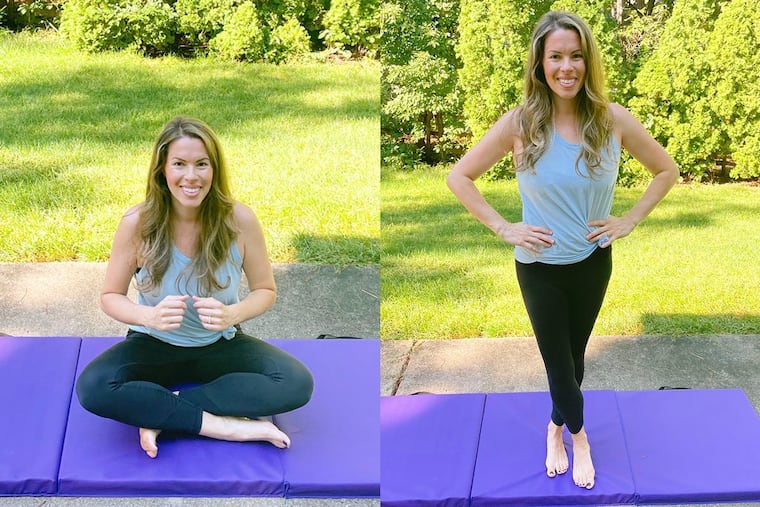What this one-minute fitness test can reveal about your health
The seemingly simple skill of shifting with ease from a seated position on the floor to standing — without the assistance of your hands or knees — can reveal quite a bit about your overall health.

How easily can you transition from the floor to your feet? As we age, we spend more time seated in a comfortable chair than crouching down on a hard floor. But it may surprise you to learn that having the seemingly simple skill of shifting from a seated position on the floor to standing — without the assistance of a nearby object or use of your hands, arms, or knees — can reveal quite a bit about your fitness level.
Brazilian physician and sports medicine specialist Claudio Gil Araújo theorized that mortality is linked to how well older people can perform this “sitting-rising test.” And while there are more reliable tools doctors use to measure longevity, there is some value in understanding how this simple test can assist in identifying weak spots, and how to become more powerful in the pursuit of this exercise.
This sit-to-stand movement requires a great deal of flexibility, core and leg strength, and balance. As we age, muscles naturally begin to atrophy, which makes the body more susceptible to fall-related injuries. Falls are a major health hazard for older adults. It’s for this reason that it’s essential to practice a well-rounded workout routine each week. By including a wide variety of training tools, you’ll be safer and stronger as a result.
Please note, this test is not realistic for everyone, such as those who suffer from bad knees, lower back problems, or arthritis. These ailments make performing the test not only difficult but dangerous. This exercise exam is not conclusive, rather a fun way to pinpoint which parts of your pump-up program need more attention.
How the test works
Step One. Remove your shoes and wear comfortable clothing. Without holding on to anything or leaning for balance, cross one leg in front of the other and lower into a sitting position on the floor. Take your time and keep control over your movement.
Step Two. From this seated position, try to stand up, pushing only through your feet for support.
Scoring system: Start this test with 10 points. Each time you use your hands, forearms, or any other body part that is not your feet to lower into a sitting position or stand, deduct a point. Take off a half-point if you lose your balance at any time.
Good: 8-10 points
Fair: 3.5-7.5 points
Poor: 0-3 points
If your body had a hard time taking flight, don’t fret. This test is more strenuous than it sounds. Luckily, by recognizing weak spots and implementing the right set of strength training and flexibility enhancing moves, you can begin to improve your aerobic aptitude in these areas for years to come.
» READ MORE: Get ahead of holiday weight gain by starting your fitness resolution now
Exercises to add to your weekly workout
Kneeling stand
Using a mat for support (and a rolled towel beneath your knees for additional cushion), gently sit on your right lower leg. Your left leg should be in front of your body and bent at a 90-degree angle.
Push through your left heel to stand. Once balanced, pull your right knee up toward your torso and hold to strengthen your balance. Repeat five times before switching sides.
Bridges
Begin on your back with your legs bent, feet flat on the floor, and arms extended out to your sides.
Engage your core muscles and push through your heels to elevate your hips from the floor. Your body should form a straight line from shoulders through knees. Squeeze your glute muscles at the top, then lower back down to the floor. Repeat 10 to 12 times. Increase the difficulty by not fully lowering your hips between reps.
» READ MORE: The health benefits of working out with your dog
Hip flexor stretch
Remain on your back and keep your left foot in place. Cross your right leg over your left thigh, positioning your right ankle just above your left knee.
Without lifting your upper body or head from the floor, lace your fingers together behind your left thigh. Hold for 20 seconds, then repeat on the opposite side.
Ashley Blake Greenblatt is a certified personal trainer and wellness coach in South Jersey. To learn more about her virtual training program, go to ashleyblakefitness.com.